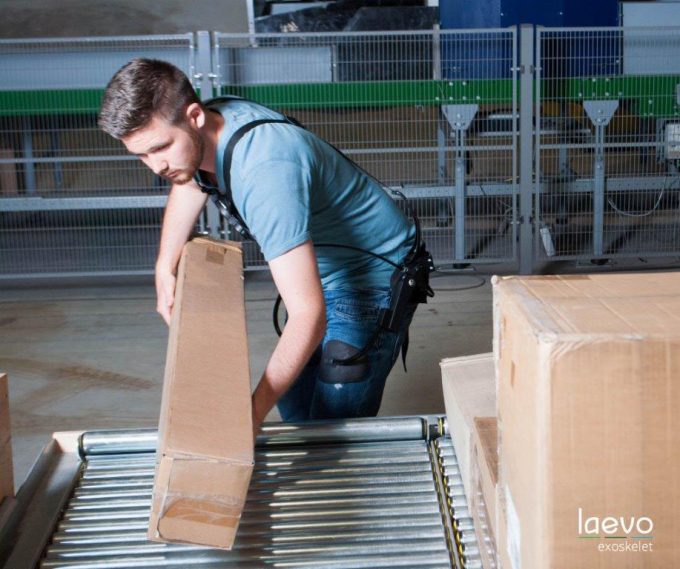SNCF has its say on Premium’s Geodis coverage
Always open to welcoming all views

In one of those curious incidences where life imitates art, Geodis has introduced the use of exoskeletons – external bracing – at its distribution facility in Venlo, the Netherlands.
A future with exoskeleton technology was vividly brought to life in the 2013 film Elysium, starring Matt Damon, who spends the majority of the movie in a powered exoskeleton beating seven shades of hell out of savage cyborgs policing a ravaged world.
In today’s world, exoskeletons have mainly been developed for rather more prosaic purposes – mostly medical science, particularly in the field of artificial limbs – but Geodis has adopted a relatively simple form the technology to help warehouse workers who can have to carry as a much as four tonnes of goods a day.
Three staff at the facility wear the exoskeletons for lower-back support as they lift and carry objects during pick and pack activities. The exoskeleton gives support via a spring system that acts as a type of counterweight. When the employee bends, the spring pushes back so that the load on the spine is reduced by 40%.
“Staff are fitter after a working day thanks to these skeletons,” Sjors van Enckevort, site manager contract logistics at Geodis Venlo, enthusiastically claimed.
While these exoskeletons have been deployed to mainly prevent back injury, the company said it was looking at more highly developed applications of the technology.
It said: “This type of exoskeleton is ‘passive’, meaning they follow the user, adjusting pressure without impeding movement. There is now increasing interest in the development of an ‘active’ exoskeleton, which would extend support to the employee’s arms as well.”
But will it be able to do this?
https://www.youtube.com/watch?v=M9krwGpD__s
Comment on this article